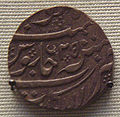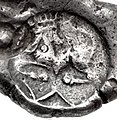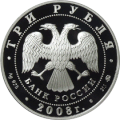Portal:Numismatics
The Numismatics Portal

Numismatics is the study or collection of currency, including coins, tokens, paper money, medals and related objects.
Specialists, known as numismatists, are often characterized as students or collectors of coins, but the discipline also includes the broader study of money and other means of payment used to resolve debts and exchange goods.
The earliest forms of money used by people are categorised by collectors as "odd and curious", but the use of other goods in barter exchange is excluded, even where used as a circulating currency (e.g., cigarettes or instant noodles in prison). As an example, the Kyrgyz people used horses as the principal currency unit, and gave small change in lambskins; the lambskins may be suitable for numismatic study, but the horses are not.[dubious ] Many objects have been used for centuries, such as cowry shells, precious metals, cocoa beans, large stones, and gems. (Full article...)
Selected article -

Bottom row: Prominent design elements used on the front of $5 and $20 Demand Notes (located respectively under their denomination); pictured in the middle is the front of a $10 Demand Note with prominent design elements listed
A Demand Note is a type of United States paper money that was issued from August 1861 to April 1862 during the American Civil War in denominations of 5, 10, and 20 US$. Demand Notes were the first issue of paper money by the United States that achieved wide circulation. The U.S. government placed Demand Notes into circulation by using them to pay expenses incurred during the Civil War including the salaries of its workers and military personnel.
Because of the distinctive green ink on their reverse, and because state-chartered bank and Confederate notes of the day typically had blank reverse, the Demand Notes were nicknamed "greenbacks", a name later inherited by United States Notes and Federal Reserve Notes. The obverse of the Demand Notes contained familiar elements such as the images of a bald eagle, Abraham Lincoln, and Alexander Hamilton, though the portraits used on Demand Notes are different from the ones seen on U.S. currency today. (Full article...)Selected image
Credit: Okerele
Did you know...

- ...that with its two-dollar coin (reverse pictured), Newfoundland was the only British colony to issue circulating gold coinage?
- ...that Mount Burgess is nicknamed the Ten Dollar Mountain because it was featured on Canadian currency?
- ...that the American Buffalo gold bullion coin was the first .9999 fine 24-carat gold coin released by the United States Mint?
- ...that the Alabama centennial half dollar was the first commemorative coin minted with the image of a living individual?
- ...that Aksumite currency was the only native coinage to be issued in Africa without direct influence by an outside culture like Roman, Greek, etc...?
Related portals
Selected coin -

The cent, the United States of America one-cent coin (symbol: ¢), often called the "penny", is a unit of currency equaling one one-hundredth of a United States of America dollar. It has been the lowest face-value physical unit of U.S. currency since the abolition of the half-cent in 1857 (the abstract mill, which has never been minted, equal to a tenth of a cent, continues to see limited use in the fields of taxation and finance). The first U.S. cent was produced in 1787, and the cent has been issued primarily as a copper or copper-plated coin throughout its history. Due to inflation, pennies have lost virtually all their purchasing power and are often viewed as an expensive burden to businesses, banks, government (especially mints) and the public in general.
The penny is issued in its current form as the Lincoln cent, with its obverse featuring the profile of President Abraham Lincoln since 1909, the centennial of his birth. From 1959 (the sesquicentennial of Lincoln's birth) to 2008, the reverse featured the Lincoln Memorial. Four different reverse designs in 2009 honored Lincoln's 200th birthday and a new, "permanent" reverse – the Union Shield – was introduced in 2010. The coin is 0.75 inches (19.05 mm) in diameter and 0.0598 inches (1.52 mm) in thickness. The current copper-plated zinc cent issued since 1982 weighs 2.5 grams, while the previous 95% copper cent still found in circulation weighed 3.11 g (see further below). (Full article...)Selected banknote image -

Credit: commons:User:WikedKentaur.
A circulated 1 Soviet ruble, issued in 1961. The color theme is a tradition that can be traced back to Imperial time. .
General images -
Numismatic terminology
- Bullion – Precious metals (platinum, gold and silver) in the form of bars, ingots or plate.
- Error – Usually a mis-made coin not intended for circulation, but can also refer to an engraving or die-cutting error not discovered until the coins are released to circulation. This may result is two or more varieties of the coin in the same year.
- Exonumia – The study of coin-like objects such as token coins and medals, and other items used in place of legal currency or for commemoration.
- Fineness – Purity of precious metal content expressed in terms of one thousand parts. 90% is expressed as .900 fine.
- Notaphily – The study of paper money or banknotes.
- Scripophily – The study and collection of stocks and Bonds.
WikiProjects
Numismatic topics
Money - Coins - Banknotes - Electronic money - Exchange rate - Legal tender - Clubs - Terminology
Ancient currency: Asia - Byzantium - Greece - Primitive Money - Roman - Indian coinage
Modern currency: Africa - The Americas - Asia and the Pacific - Europe - Bullion coins - Challenge coin - Commemorative coins - Token coins
Economics: Banking - Bonds - Cheques - Credit Cards - Fiat currency - Gold standard - Mints - Monetary union - Reserve currency - Stocks
Production: Coining (machining) - Designers - Die making - Mint (coin) • Coinage Metals: Aluminum - Bronze - Copper - Gold - Platinum - Silver - Tin
Subcategories
Most traded currencies
| Rank | Currency | ISO 4217 code |
Symbol or abbreviation |
Proportion of daily volume | Change (2019–2022) | |
|---|---|---|---|---|---|---|
| April 2019 | April 2022 | |||||
| 1 | U.S. dollar | USD | US$ | 88.3% | 88.5% | |
| 2 | Euro | EUR | € | 32.3% | 30.5% | |
| 3 | Japanese yen | JPY | ¥ / 円 | 16.8% | 16.7% | |
| 4 | Sterling | GBP | £ | 12.8% | 12.9% | |
| 5 | Renminbi | CNY | ¥ / 元 | 4.3% | 7.0% | |
| 6 | Australian dollar | AUD | A$ | 6.8% | 6.4% | |
| 7 | Canadian dollar | CAD | C$ | 5.0% | 6.2% | |
| 8 | Swiss franc | CHF | CHF | 4.9% | 5.2% | |
| 9 | Hong Kong dollar | HKD | HK$ | 3.5% | 2.6% | |
| 10 | Singapore dollar | SGD | S$ | 1.8% | 2.4% | |
| 11 | Swedish krona | SEK | kr | 2.0% | 2.2% | |
| 12 | South Korean won | KRW | ₩ / 원 | 2.0% | 1.9% | |
| 13 | Norwegian krone | NOK | kr | 1.8% | 1.7% | |
| 14 | New Zealand dollar | NZD | NZ$ | 2.1% | 1.7% | |
| 15 | Indian rupee | INR | ₹ | 1.7% | 1.6% | |
| 16 | Mexican peso | MXN | MX$ | 1.7% | 1.5% | |
| 17 | New Taiwan dollar | TWD | NT$ | 0.9% | 1.1% | |
| 18 | South African rand | ZAR | R | 1.1% | 1.0% | |
| 19 | Brazilian real | BRL | R$ | 1.1% | 0.9% | |
| 20 | Danish krone | DKK | kr | 0.6% | 0.7% | |
| 21 | Polish złoty | PLN | zł | 0.6% | 0.7% | |
| 22 | Thai baht | THB | ฿ | 0.5% | 0.4% | |
| 23 | Israeli new shekel | ILS | ₪ | 0.3% | 0.4% | |
| 24 | Indonesian rupiah | IDR | Rp | 0.4% | 0.4% | |
| 25 | Czech koruna | CZK | Kč | 0.4% | 0.4% | |
| 26 | UAE dirham | AED | د.إ | 0.2% | 0.4% | |
| 27 | Turkish lira | TRY | ₺ | 1.1% | 0.4% | |
| 28 | Hungarian forint | HUF | Ft | 0.4% | 0.3% | |
| 29 | Chilean peso | CLP | CLP$ | 0.3% | 0.3% | |
| 30 | Saudi riyal | SAR | ﷼ | 0.2% | 0.2% | |
| 31 | Philippine peso | PHP | ₱ | 0.3% | 0.2% | |
| 32 | Malaysian ringgit | MYR | RM | 0.2% | 0.2% | |
| 33 | Colombian peso | COP | COL$ | 0.2% | 0.2% | |
| 34 | Russian ruble | RUB | ₽ | 1.1% | 0.2% | |
| 35 | Romanian leu | RON | L | 0.1% | 0.1% | |
| 36 | Peruvian sol | PEN | S/ | 0.1% | 0.1% | |
| 37 | Bahraini dinar | BHD | .د.ب | 0.0% | 0.0% | |
| 38 | Bulgarian lev | BGN | BGN | 0.0% | 0.0% | |
| 39 | Argentine peso | ARS | ARG$ | 0.1% | 0.0% | |
| … | Other | 1.8% | 2.3% | |||
| Total[a] | 200.0% | 200.0% | ||||
Web resources
- NumisWiki
- International Association of Professional Numismatists
- American Numismatic Association
- American Numismatic Society
- British Numismatic Association
- American Vecturist Association
- Challenge Coin Association
- Numismatic Museum of Athens, Greece
- The Perth Mint Australia
- Central Mint of China
- Royal Mint
- The French Mint
- United States Mint
- Bank of Russia
- Royal Canadian Mint
- Exact Change numismatic software
Things you can do
|
|
 |
Here are some tasks awaiting attention:
|
Associated Wikimedia
The following Wikimedia Foundation sister projects provide more on this subject:
-
Commons
Free media repository -
Wikibooks
Free textbooks and manuals -
Wikidata
Free knowledge base -
Wikinews
Free-content news -
Wikiquote
Collection of quotations -
Wikisource
Free-content library -
Wikiversity
Free learning tools -
Wiktionary
Dictionary and thesaurus
Sources
- ^ "Triennial Central Bank Survey Foreign exchange turnover in April 2022" (PDF). Bank for International Settlements. 27 October 2022. p. 12. Archived (PDF) from the original on 2022-10-27. Retrieved 2022-10-29.
- ^ The total sum is 200% because each currency trade is counted twice: once for the currency being bought and once for the one being sold. The percentages above represent the proportion of all trades involving a given currency, regardless of which side of the transaction it is on. For example, the US dollar is bought or sold in 88% of all currency trades, while the euro is bought or sold in 31% of all trades.


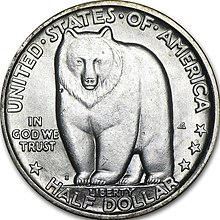

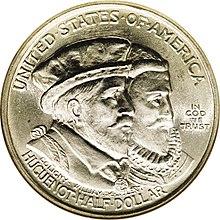



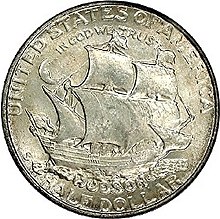






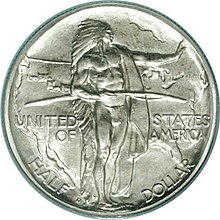








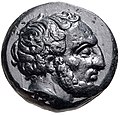








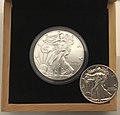






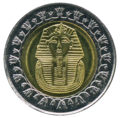









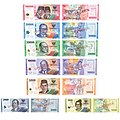

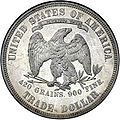
![Image 39Chinese round coins, Eastern Zhou dynasty – Warring States Period, c. 300–220 BC. Four Hua (四化, 30mm, 6.94 g). Legend Yi Si Hua ([City of] Yi Four Hua). (from Coin)](http://upload.wikimedia.org/wikipedia/commons/thumb/f/f9/CHINA%2C_Eastern_Zhou_dynasty_-_Warring_States_Period._State_of_Q%C3%AD._City_of_Yi._Circa_300-220_BC.jpg/120px-CHINA%2C_Eastern_Zhou_dynasty_-_Warring_States_Period._State_of_Q%C3%AD._City_of_Yi._Circa_300-220_BC.jpg)

